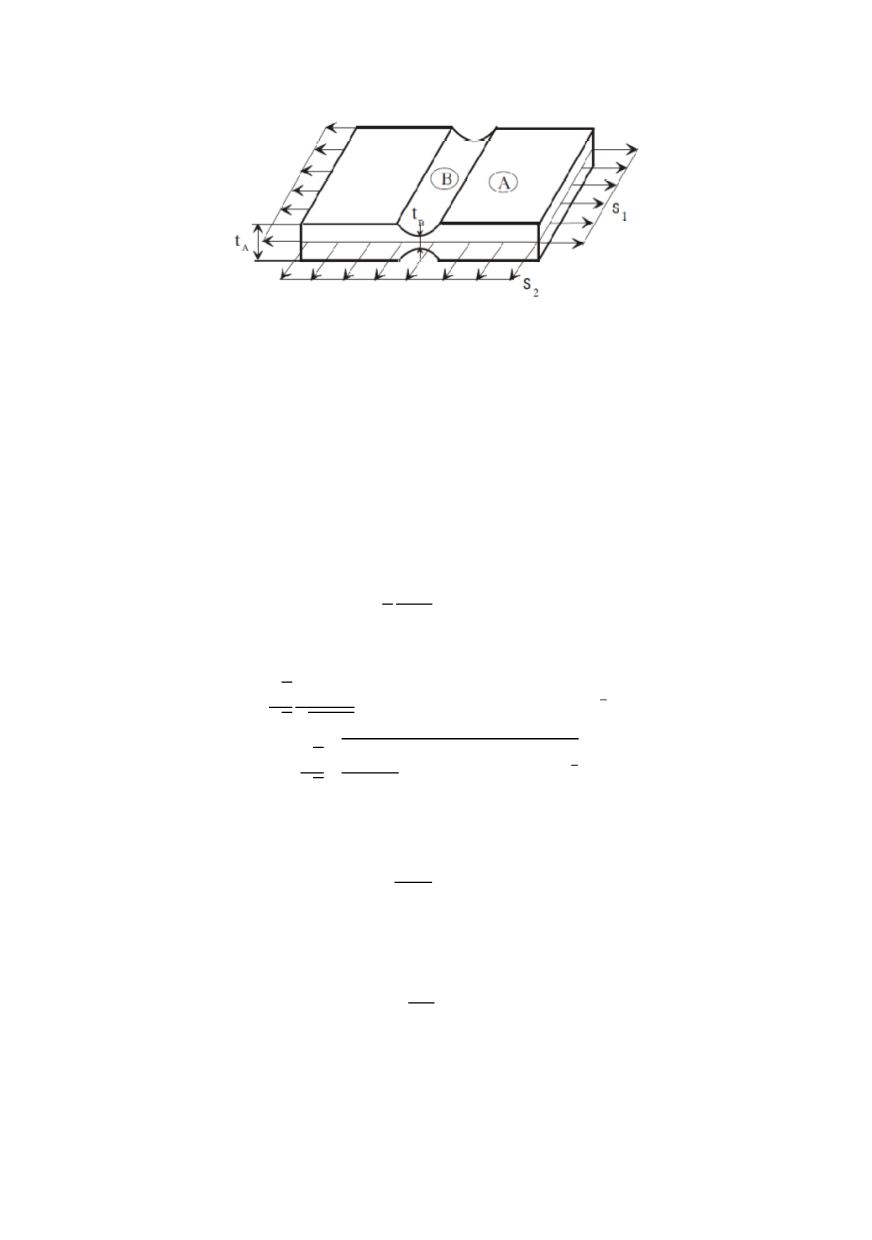

56
Figure 4: The thin sheet with groove of Marciniak and Kuczynski /22/
Assumptions
A4-1. For the plane sheet specimen considered (Fig. 4) an initial geometric imperfec-
tion given by two symmetric very shallow grooves
1 െ
ݐ
బ
ݐ
బ
ا
1 ⁄
is assumed. More-
over, a plane tension is considered such that one of principal stresses is along the groove
whereas, the other is perpendicular to it such that stress state is close to equibiaxial
(i.e.
ߪ
ଵ
ߪ
ଶ
ሺ
ߪ
ଵ
2⁄ ሻ 0, ߬
ଵଶ
ൌ ߬
ଶଷ
ൌ ߬
ଷଵ
ൌ 0
).
A4-2. Rigid rate independent plasticity of transversely isotropic material (its direction
being normal to the sheet) is accepted with evolution equations
݀
ߝ
ଵ
ൌ ሾሺܴ 1ሻ
ߪ
ଵ
െ ܴ
ߪ
ଶ
ሿ݀
,ߣ
d
ߝ
ଶ
ሾെܴ
ߪ
ଵ
ሺܴ 1ሻ
ߪ
ଶ
ሿ݀
,ߣ
݀
ߝ
ଷ
ൌ െሺ
ߪ
ଵ
ߪ
ଶ
ሻ݀
ߣ
(52)
originating by the associate flow rule from the following yield function
2݂ ؝ 2 3
ߪ
ത
ଶ
݄ሺ
ߝ
ҧሻ ൌ 1
(53)
where
݄ሺ
ߝ
ҧሻ
is hardening function. Here equivalent stress and equivalent strain increment
are respectively given by
ߪ
ത ൌ √3 √2 1 √2 ܴ ሼሺܴ 1ሻሺ
ߪ
ଵଶ
ߪ
ଶଶ
ሻ െ 2ܴ
ߪ
ଵ
ߪ
ଶ
ሽ
భ మ
(54)
݀
ߝ
ҧ ൌ √2 √3 ඨ 2 ܴ 1 2ܴ ሼ݀
ߝ
ଵଶ
݀
ߝ
ଶଶ
ܴ ݀
ߝ
ଷଶ
ሽ
భ మ
(55)
which follow from Korhonen's expressions assuming that
R
1
=
R
2
=
R
. Their product
amounts to the infinitesimal increment of plastic work, i.e.
݀
ߝ
ҧ ؔ ݀መ ܹ
ߪ
ത ൎ ݀
ߝ
ҧ
(56)
The two formulae (54) and (55), are also derived directly from the book of Hill /28/
(chapter on
anisotropic plasticity) with the yielding anisotropy parameter
ܴ ൌ 2
ߪ
௬
య
ଶ
ߪ
௬
భ
ଶ
െ 1
(57)
(
ߪ
௬
భ
ൌ
ߪ
௬
మ
്
ߪ
௬
య
are uniaxial yield stresses in indicated directions). Apart from a
typographic mistake in
݀
ߝ
ҧ
(where on RHS in M-K they have
ߝ
ଵଶ
݀
ߝ
ଶଶ
݀
ߝ
ଷଶ
), constants
in
ߪ
ത
and
݀
ߝ
ҧ
are slightly different here, but it does not influence the final results.


















